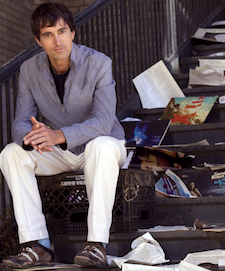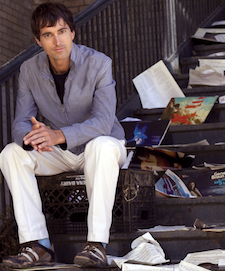Shhh. There’s a hidden story quietly exploding in classical music. It’s the surprising evolution and adventurousness of American orchestras.
You won’t read this story in the pages of the leading newspapers and magazines, most of which apparently believe every promising composer lives in Brooklyn, premieres each piece at Le Poisson Rouge, and tweets after composing each measure.

You’d only see this from running the numbers on living composers. A proper accounting of composers being performed by American orchestras could only come from ASCAP and BMI, the performing rights organizations who track performances every day. [Editor’s note: Neither ASCAP nor BMI keep a publicly accessible database of performances.] In the top handful, you’d find several surprising things: the emergence of new faces, the rise of the self-published composer, and the field’s embrace of electronic sounds.
This is important for many reasons, not least of which is that any field should have an accurate understanding of itself. Beyond that, American orchestras, particularly regional ones, should get credit for being more dynamic and courageous than the critical establishment realizes. And young composers should know that no, you don’t have to play by the rules.
In the past, the League of American Orchestras has released a list of most-performed, living composers. But the list’s persistent inaccuracy stems from its reliance on self-reporting from orchestras in the League, which doesn’t include many smaller groups who are playing tons of new works. (Take, for example, the Boston Modern Orchestra Project: Its numbers alone would alter the list). We must call on ASCAP and BMI to post their numbers.
You can’t fault New York-based publications entirely, for one simple reason: New music in New York City is not really about orchestras. Whether it’s uptown, downtown, or Brooklyn, the action is mostly in chamber music, from Columbia University to Bang on a Can to Alarm Will Sound. New York media is still locally-based in arts coverage, despite their efforts to position themselves as national papers. While it’d be nice if the “big dogs” turned their attention west of the Hudson more often, the responsibility also falls on us in the field to look elsewhere. Other outlets around the country — such as the news aggregator ArtsJournal, San Francisco Classical Voice, The View From Here, I Care If You Listen, New Music Box — have been more powerfully impacting the conversation with every passing month. The more we read them, the more they’ll grow and a more balanced view will emerge.
That balanced perspective would encompass the huge variety of orchestras, especially the unsung regional ones, where the heart of classical music beats. It’s not just about sound; it’s about listening. The symphonic space demands a uniquely focused listening perspective that we rarely experience anywhere else in the 21st Century. Not every piece needs to be a magnum opus: An opener, whether John Adams’ Short Ride in a Fast Machine or my own Mothership, is light by definition. But the works must withstand the internal attention of an orchestra and the external attention of a couple thousand active listeners. And when you get to longer, symphony-length works, you can really travel to trippy places.
To be clear, I love chamber music. It definitely deserves to be written about, and its lean forces encourage experimentation. For example, the chamber music of Anna Clyne, Anthony Cheung, and Marcos Balter is wonderfully rich and provocative in unique ways. But an outsized amount of attention is focused on the “Brooklyn house style” of post-minimalist indie-rock. The latter mindset is best illuminated by some head-scratching comments by Nico Muhly: “I’ve always found the best thing to do is to make work that doesn’t have to happen in a huge space. I think it would be fine if major orchestras closed.”
Now, I think the world of my old classmate — he walks on water, changes water to wine, then walks on the wine — but in this case, he’s misunderstanding one of the best things about our field. Symphonic music is about large spaces, it’s about deep listening, and yes, it’s about the grassroots network of wonderful orchestras around the country. Each one has unique qualities. It’s not fine if a single one of them closes. To be fair, the Rev. Dr. Muhly posted a lengthy clarification on his site, which you should read, and I sympathize with someone who feels their words have been de-contextualized.
Symphonic music is about large spaces, it’s about deep listening, and yes, it’s about the grassroots network of wonderful orchestras around the country.
But his opinion is a common one, especially among non-symphonic composers. It’s totally fine if a composer wants to churn out a million notes a year, or if a rock artist wants to riff over some drones or whatever. But ephemera does not survive very long on the symphonic circuit. The top handful of symphonic composers — those getting above, say, 40 or 50 performances a year — spend forever on each score. John Adams just entirely rewrote his concerto for string quartet, for example. On the other side of the Bay, I feel like I’m perpetually in labor with each piece.
John is especially relevant in this discussion because he got into trouble for disparaging today’s “music lite.” It struck me as a bit startling coming from the composer of Grand Pianola Music, and someone of his stature should probably be more magnanimous. But what he’s describing is happening, a musical “commodity hell” of indistinguishable mass-produced items — with oscillating minor thirds as common as disposable razors.
Untold Stories
What would the ASCAP/ BMI numbers tell us? They’d certainly demonstrate a move away from publishers. Jennifer Higdon, like me, most likely would have signed with a major publisher early on. But as she became heavily performed, she probably realized that no publisher was worth half her copyright. That’s a lot of ownership to give up. (For me, it means not having to get a second job or a film gig.) Kevin Puts, who won the Pulitzer and is becoming one of America’s busiest opera composers, has remained independent. We’ve each had to creatively design our own model.
As Jennifer Higdon became heavily performed, she probably realized that no publisher was worth half her copyright. That’s a lot of ownership to give up.
Publishers argue that, in exchange for owning half your newborn child, they promote your works to conductors and orchestras and manage your career. The latter task — negotiating contracts and appearances, providing valuable counsel — can certainly be handled by an agent. You absolutely need an agent if you do not have a publisher. Composers never used to have them, but these days there are quite a few at various agencies. I started with Monica Felkel at Young Concert Artists and moved on to Mary Pat Buerkle at Opus 3. The latter has become such a key part of my life, I almost sent her my homemade eggnog this year. (It would’ve involved FedEx’s live animal rates, due to the temperature issue, so I gave up.)
The nitty-gritty of negotiating rentals and handling sheet-music sales can be handled by an independent distributor such as Bill Holab, who does a fine job for me without owning any copyright. Some composers do it all themselves — John Mackey, who’s currently unloading a big-rig full of band music into the back of the building — a hugely successful non-symphonic composer, but one dealing with large forces nonetheless. I would argue that the less time you spend on spreadsheets, the more time you have for music — so, get a distributor.
But that other role of traditional publishers — promotion of your catalogue — is indeed hard to replace. It makes sense to sign with a publisher if you’re young and do not have much exposure; they can help you break through. Once you reach critical mass, however, you may want to rethink your relationship. I’m not certain that publishers have the time or budgets to promote the huge amount of composers in their stables. For me, reaching critical mass came the old fashioned way: the conductors who helped me early on, from Robert Moody to Riccardo Muti, from Edwin Outwater to Marin Alsop, from John Adams to Michael Tilson Thomas, and, most of all, Leonard Slatkin.
What else would the numbers show? That orchestras are open to new sounds and technology. Admittedly, I’m talking about my own catalogue here, but it’s one example of how orchestras can evolve. I don’t just mean the big ones either: when Sioux City performs The B-Sides, it’s a reminder that regional orchestras and audiences aren’t afraid to take chances (or use electricity). There wasn’t any widely-performed electro-acoustic symphonic music as a precedent, so I’ve spent many years observing orchestras and learning the logistics, the unions, and, yes, the big-space acoustics of integrating electronics into the symphonic space. Yes, you can break the rules, as long as you know what they are (except, um, union rules).
This isn’t a New York story. It’s a national story. And it deserves to be told.
This piece first appeared on Mason Bates’ blog.

